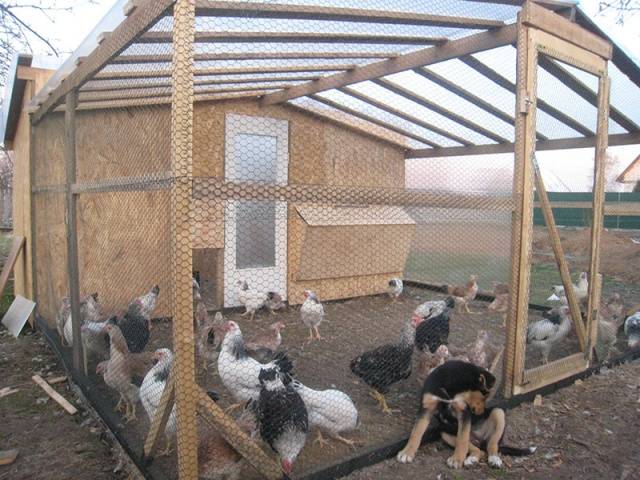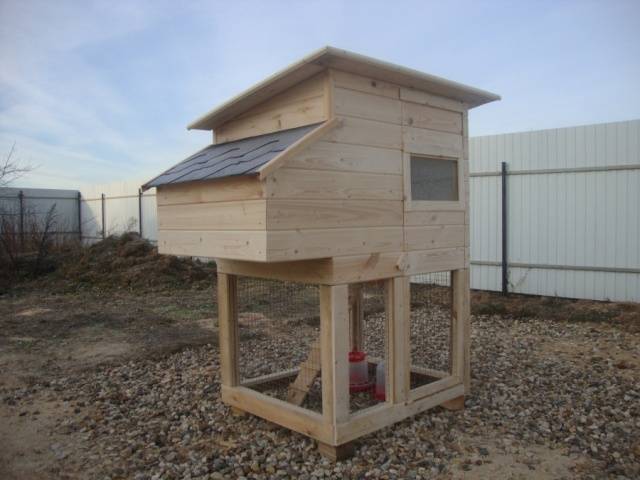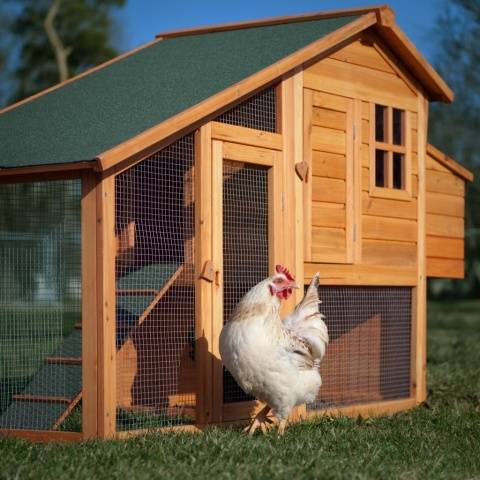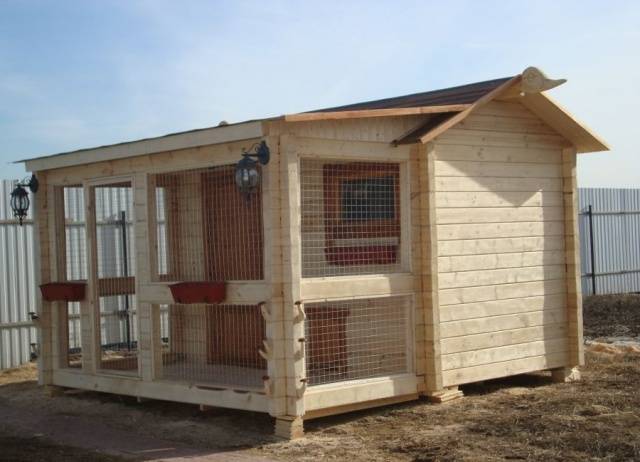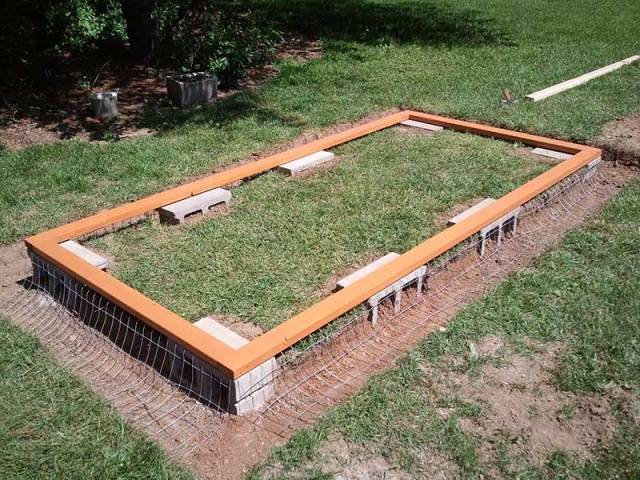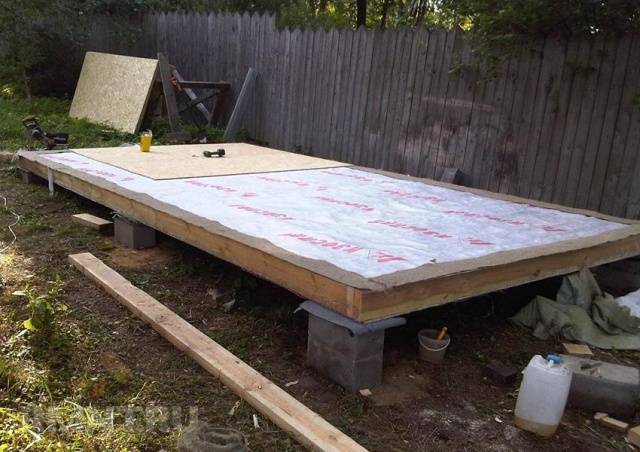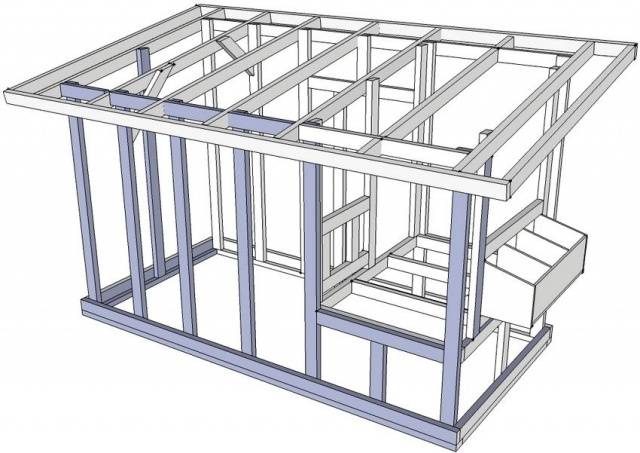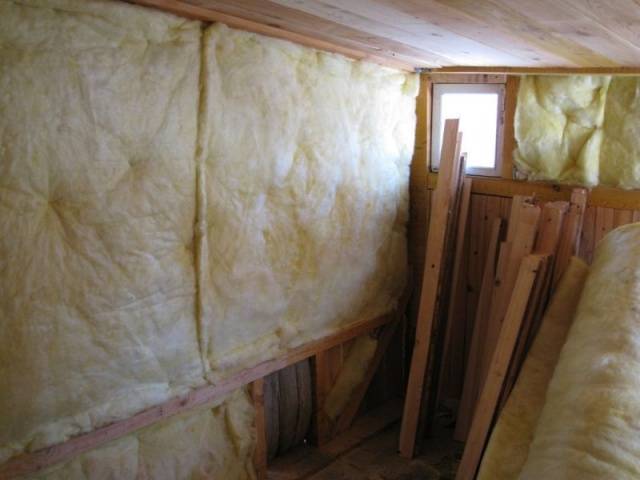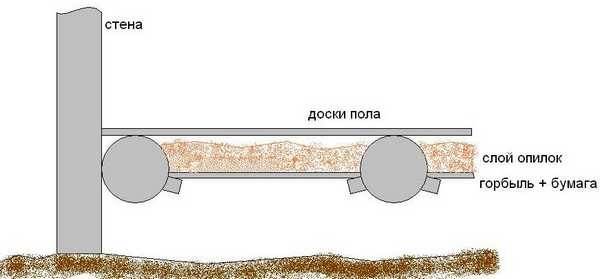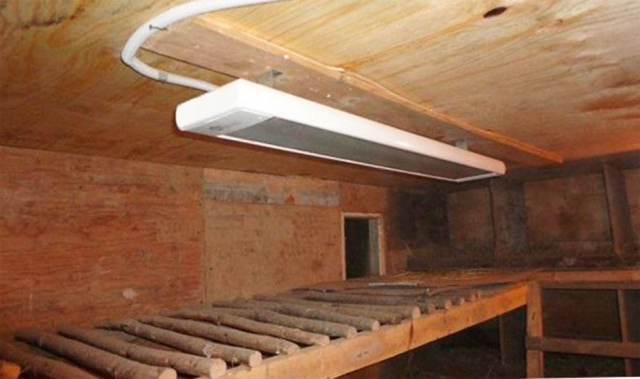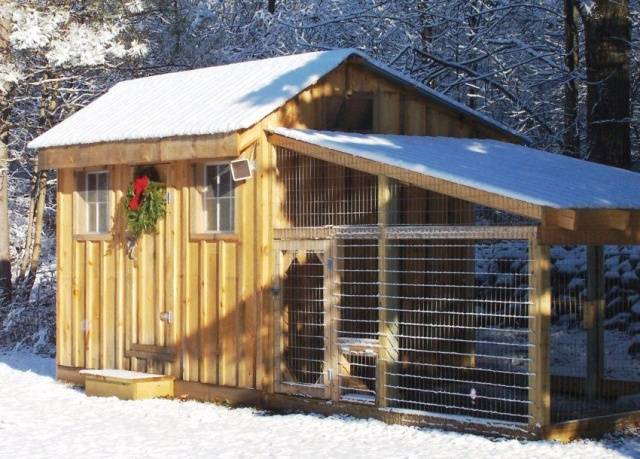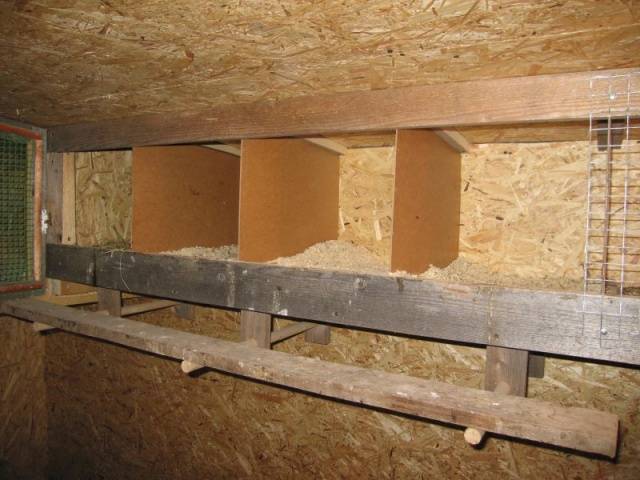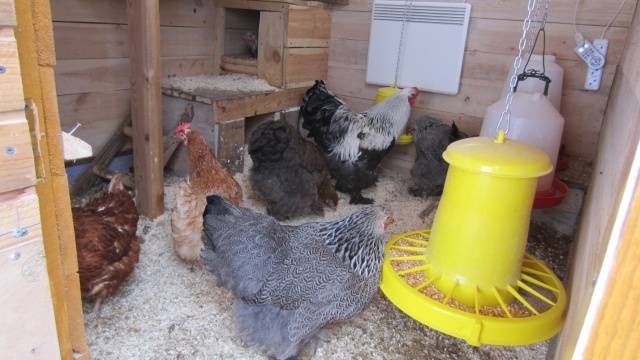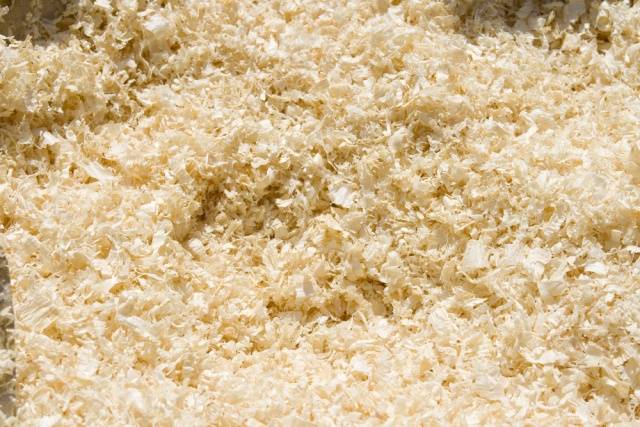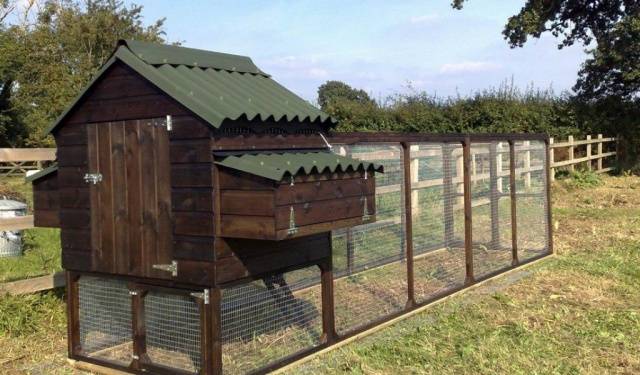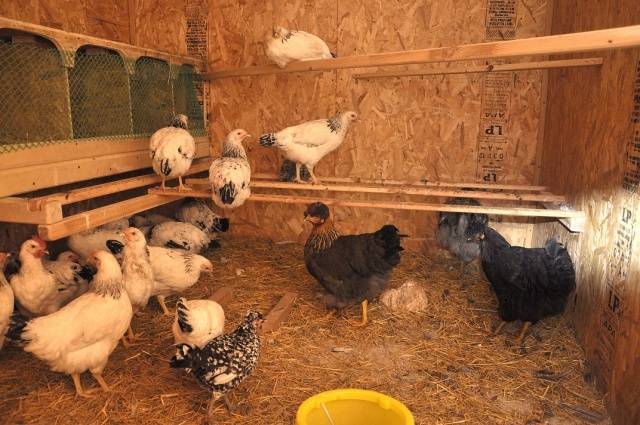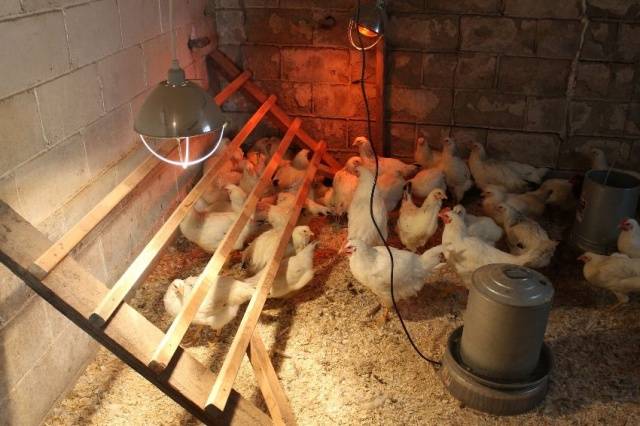Content
In winter, given good conditions, chickens can lay in the same way as in summer. It will be enough to warm the chicken coop well. Under optimal conditions, laying hens should be comfortable enough. To do this, you need to give them enough space and create good lighting. It is better if the room temperature is from -2 to +20 degrees. In addition, chickens need good nutrition. It is better to insulate a frame chicken coop at the stage of its construction. In this case, you do not have to worry about the quantity and quality of the eggs you receive.
Features of warm chicken coops
There are certain norms according to which it is worth placing chickens in a chicken coop. It is necessary to place from 2 to 5 heads per square meter. With a small room, you can populate a bird more densely. However, these conditions can affect the ability of chickens to lay eggs regularly.
In a confined space, more perches and nests should be provided. If you make a multi-tiered chicken coop, the chickens will feel more comfortable. It is also necessary to equip winter walking. At outdoor temperatures down to -15 layers, you can let them go for a walk. However, this is allowed only on calm days. To figure out how to build a chicken coop, you need to decide on the right materials.
Choice of materials
You can build a chicken coop at low cost from foam concrete or cinder block. For the construction of a budget insulated chicken coop, it is equipped as a dugout. Walls are usually erected about half a meter above the ground. Insulated windows are installed on the south side. They should be equipped with double or triple glazing. It is necessary to do the insulation of that section of the chicken coop that protrudes above the ground. To increase the thermal insulation of the walls, you can cover 3 sides (except for the southern one) with soil.
If poultry breeding is planned on a large scale for yourself or for sale, you should build a solid chicken coop from foam concrete. Such designs are quite warm and reliable.
Another good option is to create frame shed for chickens. Since it is not large in size, the beam may have a small cross-section. The frame can be sheathed with boards, as well as plywood or other sheet materials. Insulation is laid between the racks. The frame is also sewn up from the inside. To prevent the appearance of mice in the insulation, you should close it with a metal mesh from the outside and from the inside. Its cells should be quite small so that rodents cannot get through it. Such work will require additional costs, but the fight against mice will cost more.
If the chicken coop is not insulated, in the middle lane you can build it from thick beams or logs. Seams should be caulked. This will protect the chicken coop from drafts. The tow must be covered with slats so that layers could not peck it out.
Base
When constructing a heavy chicken coop, the walls of which will be quite massive, you should take a closer look at the arrangement of a strip shallow foundation. There are other options for creating bases. The columnar foundation is quite simple to install. It is suitable for medium sized chicken coops. If the building is light, you can simply install ready-made foundation blocks under it.
If the foundation is piled or columnar, the supports must be installed at the corners and every 3 m.With such an arrangement of the pillars, an optimal load distribution on the base can be ensured.
Insulation of the chicken coop
Heating and insulating a chicken coop are the main tasks that are associated with a device of this design. In a warm room, even in severe frosts, you can not install heating devices. In any case, when creating a heating system, it will cost a penny.
For a layer of insulation, modern materials are used. They are stuffed onto the chicken coop frame both from the outside and from the inside. The main indicator when choosing a material is its price. Foam panels have the optimum cost. They cope well with the tasks of thermal insulation, they are easy to mount on special glue.
There are several more common options for warming a chicken coop - mineral wool and expanded polystyrene. In the first case, it is necessary to protect the insulation with membranes. Outside the chicken coop, the mineral wool is covered with hydro and wind insulation, and from the inside with a vapor-proof membrane.
Expanded polystyrene also has a fairly large number of positive properties. It has better insulation performance than polystyrene, however, it has a high price. Mice do not like this material, which is undoubtedly its main advantage.
As insulation for the chicken coop natural materials can also be used. The space between the two planes is covered with sawdust. The walls can be coated with clay. Such methods of insulation are inferior in quality to many modern building materials, however, the costs are minimal.
If a building a barn for chickens do it yourself is carried out in the southern region, "folk" insulation will be the best choice. However, in the central lane it will not be enough.
Ceiling insulation
The ceiling of the chicken coop must be insulated. Warm air masses always accumulate under it. With insufficient insulation of the ceiling in winter period in the chicken coop it will always be cold. From below, the ceiling is lined with slab panels. Hay is placed on the ceiling from the attic. This allows you to reliably insulate the room. With the correct creation of an insulating layer, laying hens will feel as comfortable as possible.
Chicken coop floors
Insulation of floors is carried out according to the same principle as for any residential building. First, the logs are laid, then the insulation is mounted and the top is covered with boards. In order for the chicken coop to be as warm as possible, the floors should be insulated as efficiently as possible.
The floors are not always made of wood. It can be adobe. In this case, straw and clay are mixed and then left to dry. In addition, the option with a hen house with a concrete floor can be chosen.
When planning a chicken coop, care must be taken to create a vestibule. The presence of such an extension allows you to reduce the heat loss of the chicken coop and reduce the cost of heating the room.
Heating
To figure out how to build do-it-yourself chicken coop, you need to think about other aspects of creating such a structure. If severe frosts are observed in the region, reliable heating of the chicken coop should be created. Every house owner is familiar with this rule. The positive temperature in the hen house provides the hens with a comfortable well-being.
Electricity
If it is possible to supply electricity to the hen house, the air in the house can be warmed using fan heaters or infrared lamps. The first option is cheaper. Their price can be quite high, however, they require little electricity during operation.
There are two types of automatic systems - programmable by time or by air temperature. Naturally, for heating the chicken coop it is better to use the option that adjusts to the temperature. When the room temperature drops to a certain value, for example, to 0 degrees, the heater turns on until the reading on the thermometer reaches +3 degrees.
Often, infrared devices are used to heat chicken coops. They do not heat the air masses, but the objects in the room. Typically, such devices are installed under the ceiling of the chicken coop. When the birds get cold, they huddle under the heater. The main thing is that the inhabitants of the hen house are warm.
The disadvantage of infrared emitters is that they burn out with frequent switching on / off. For this reason, it is best to turn them off quite rarely. Such products consume little electricity.
In addition, it is important to know other features of the use of IR lamps in chicken coops. Their surface heats up when the design of the lighting fixture is not designed for such loads. Plastic cartridges are usually pretty poor at keeping shape. Ceramics are quite rare. To increase fire safety, a wire cage should be made for the lamp. This will avoid scalding chickens and strong heating of various objects in the hen house.
Oil-type coop heaters are ineffective. They consume quite a lot of electricity, are fire hazardous and generate little heat. Making homemade devices is even more dangerous.
Potbelly stove and boiler
Another common option for heating a chicken house is to install a boiler and batteries. However, this option is very expensive and requires a lot of effort. The chicken coop is also heated with a potbelly stove. Small stove can be folded. The pipe is usually passed through the chicken coop. It should provide maximum heat.
After heating, this material is able to retain heat for a long time. If the room is well insulated, one firing of the stove will last for several days.
Sawdust
There is another way to heat the chicken coop. It is associated with the decomposition of sawdust and the associated heat release. However, this method only works if the insulation is sufficient. Pour sawdust on the floor. The first layer should be done in the fall. It should have a height of 15 cm. After backfilling, the sawdust should lie for about a month.
Thanks to this bedding, better insulation is carried out than when using hay. Chickens do not get sick at the same time, since sawdust is able to effectively regulate the level of humidity. In addition, laying hens love to rummage through the litter. This will help them stay fit during the winter with limited walking conditions.
After a month and a half, it is necessary to fill in a fresh layer of sawdust. It should also have a height of 10-15 cm. After the same period of time, it is necessary to fill up new sawdust again. This operation is repeated throughout the winter. By the end of the cold period, up to half a meter of sawdust accumulates on the floor. When creating such a substrate, even in severe frosts, the temperature in the chicken coop remains at the level of 0 degrees.
When burying in the litter, you can find that the temperature in it fluctuates within +20 degrees. Therefore, the laying hens partly dig holes and sit in them. In spring, the sawdust should be taken out into a compost pit. The phased implementation of such actions will allow you to keep warm in the chicken coop.
Ventilation device
To maintain a normal microclimate in the chicken house, you should properly equip the ventilation system... Usually it is necessary to find a plastic pipe of the desired section for it. It is located under the ceiling. It is led through the roof and brought out to a certain height - about a meter. If set correctly, there should be enough natural thrust to get rid of the rotten air masses.
Fresh air tends to seep through cracks in the walls. However, with careful insulation and sealing all design flaws, you will need to install a plastic pipe. It is mounted slightly above the floor level. The pipe is closed with a metal mesh. In addition, it is necessary to perform flaps in it.Thanks to them, you can adjust the intensity of movement of air flows.
Another option for creating ventilation is to install a small fan directly into the wall. It will effectively pull stale air out of the chicken coop. However, such a structure will require electricity supply.
The optimal indicator of humidity in a chicken coop is considered to be 60-70%. If deviations are observed in both directions, the situation should be corrected. Raising the humidity is quite simple - more containers with water should be placed in the room. We will have to work on lowering this indicator. For this task, an infrared lamp should be installed in the chicken coop.
To understand how to build a chicken coop with your own hands, you will need to read the step-by-step instructions. You can compose it yourself. First, the base is made, then a wooden frame is installed, which is sheathed with boards or plywood. It is necessary to take care of the correct installation of the insulation into the walls. After erecting the roof, it is necessary to equip the chicken coop from the inside.
Lighting
Windows are installed in each chicken coop. Despite the fact that more heat is emitted through such structures, they are necessary for a comfortable life for laying hens. For the bird to feel normal, it needs sunlight. The frames of such windows are made with 2-3 glass panes. From the inside, they should be sewn up with a metal mesh. This is for the safety of the chickens.
In order for the chickens to rush well in winter, they should increase their daylight hours. It should last about 12 hours. For such a task in the chicken coop, it is necessary to turn on the lighting fixtures. It is better if the controller is installed in the room. This will turn the light on and off automatically.
At first, some layers will spend the night on the floor, however, if it is warm enough, there is nothing to worry about. Gradually, the chickens will get used to the mode of turning on and off the light. This option can also be chosen - to make the bird rise early. In this case, the light will only burn in the morning.
